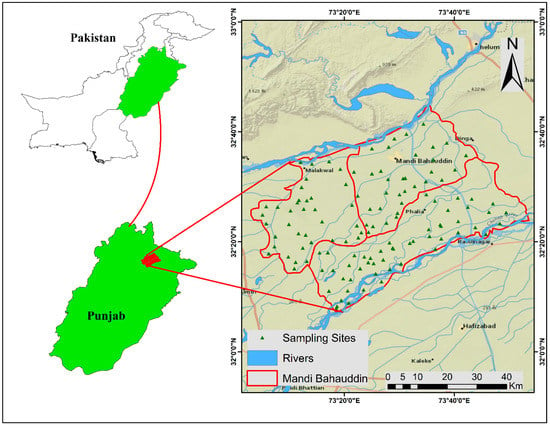Sustainable Agriculture and Food Supply Chains in Changing Climate
A topical collection in Sustainability (ISSN 2071-1050). This collection belongs to the section "Sustainable Agriculture".
Viewed by 7907Editors
Interests: food security, climate-smart agricultural techniques, resource optimization, sustainable agriculture, system automation, resilience and adaption to climate change impacts
Interests: crop growth modeling, agricultural statistics, water and nutrient management, arid agriculture
Interests: soil physics; hydrology; vadose zone flow and transport processes; soil and water management; soil–water–plant–atmosphere relationships; hydrological modeling
Special Issues, Collections and Topics in MDPI journals
Topical Collection Information
Dear Colleagues,
Changing climate affects food supply chains by ruining crops, water supplies, and livestock farming. Variations in the extremes of climate change have made crops vulnerable to new diseases and attacks from insects and pests. Water resources in arid, semiarid, and tropical zones are under the threat of uneven storms as well as water scarcity. Practicing sustainable agriculture is the only way to adapt to the impacts of climate change.
Precision agriculture helps sustainable planning and the implementation of management practices to optimize the use of water, nutrients, and other natural resources. The use of remote sensing, global positioning systems, geographical information systems, proximal sensing through the hand- or machine-held sensors, and crop mapping from variability data can help design efficient agricultural management practices at small scales. Regional- and global-level studies are vital for trend analysis of the shifting of growing seasons and the challenges of addressing food security issues. The feasibility of food production systems and food supply chains involving the production of grains, vegetables, fruits, dairy, and poultry products in a changing climate is, therefore, a burning issue of research in the global debate.
Sustainable agriculture researchers use modern technologies such as remote sensing with satellites, drones, and/or proximal sensing devices to acquire useful data about soil water content, soil salinity, plant evapotranspiration, soil temperature, and crop characteristics. Precision agriculture technologies and techniques help farmers to estimate their crop yields and make informed decisions for the optimal use of crop inputs to maximize the returns from their inputs while conserving resources. Greenhouse farming is considered an efficient method of food production in areas with unfertile soils, scarce water, and harsh weather. This Special Issue of Sustainability will publish content related to climate change, sustainable agriculture, food security, greenhouse farming, vertical agriculture, hydroponics, production systems, soil health, best management practices, irrigation system automation, nutrient management, environmental pollution, precision agriculture technologies, precision horticulture, proximal sensing, artificial intelligence, deep learning, machine vision, variable rate technologies, soil and crop variability, remote sensing in agriculture, GIS/GPS, organic amendments, soil-less media, watershed management, arid zone, climate change indices, greenhouse gas emission, livestock food supply, and sustainable food supply systems.
Prof. Farhat Abbas
Prof. Hafiz Mohkum Hammad
Dr. Sanjit Deb
Guest Editors
Manuscript Submission Information
Manuscripts should be submitted online at www.mdpi.com by registering and logging in to this website. Once you are registered, click here to go to the submission form. Manuscripts can be submitted until the deadline. All submissions that pass pre-check are peer-reviewed. Accepted papers will be published continuously in the journal (as soon as accepted) and will be listed together on the collection website. Research articles, review articles as well as short communications are invited. For planned papers, a title and short abstract (about 100 words) can be sent to the Editorial Office for announcement on this website.
Submitted manuscripts should not have been published previously, nor be under consideration for publication elsewhere (except conference proceedings papers). All manuscripts are thoroughly refereed through a single-blind peer-review process. A guide for authors and other relevant information for submission of manuscripts is available on the Instructions for Authors page. Sustainability is an international peer-reviewed open access semimonthly journal published by MDPI.
Please visit the Instructions for Authors page before submitting a manuscript. The Article Processing Charge (APC) for publication in this open access journal is 2400 CHF (Swiss Francs). Submitted papers should be well formatted and use good English. Authors may use MDPI's English editing service prior to publication or during author revisions.
Keywords
- climate change
- sustainable agriculture
- food security
- greenhouse farming
- vertical agriculture
- hydroponics
- production systems
- soil health
- best management practices
- irrigation system automation
- nutrient management
- environmental pollution
- precision agriculture technologies
- precision horticulture
- proximal sensing
- artificial intelligence
- deep learning
- machine vision
- variable rate technologies
- soil and crop variability
- remote sensing in agriculture
- GIS/GPS
- organic amendments
- soil-less media
- watershed management
- arid zone
- climate change indices
- greenhouse gas emission
- livestock food supply
- sustainable food supply systems







